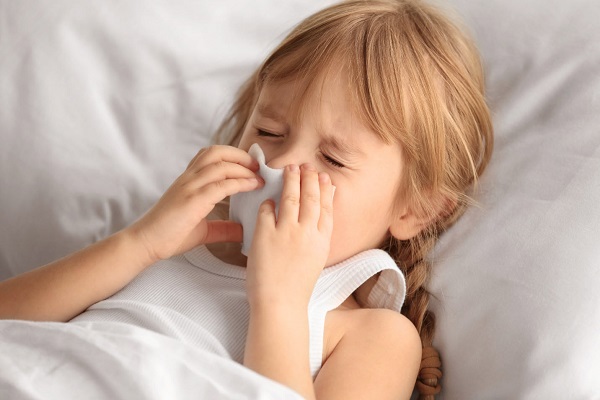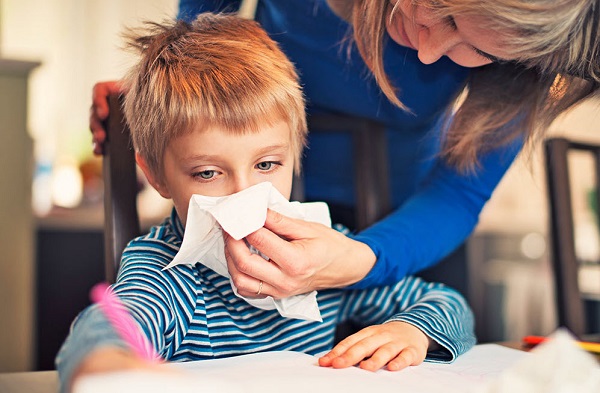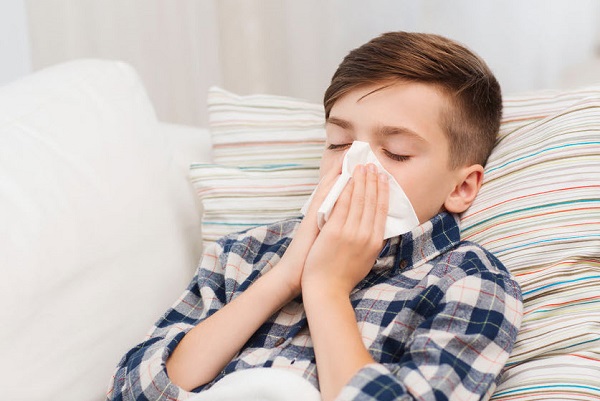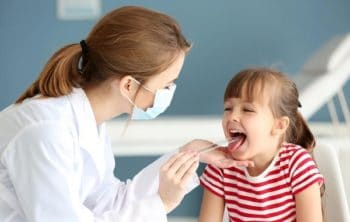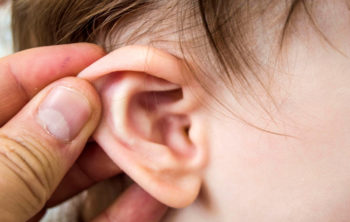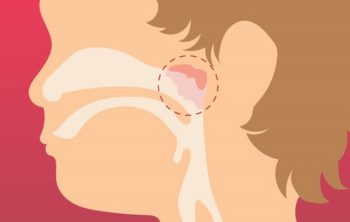Knowing the signs and symptoms of a common cold in children and how to treat it can help you get your child feeling better quickly. It is common for children to catch a cold. A cold is a viral infection of the upper respiratory system. It is most commonly caused by the rhinovirus, which spreads through contact with secretions from the nose and throat of an infected person.
Symptoms include sneezing, a runny nose, sore throat, and coughing. In most cases, a cold will resolve on its own within a week or two. However, in some cases it can lead to more serious complications such as pneumonia. There are various ways to treat a cold in children, including rest, fluids, over-the-counter medications, and home remedies. It is important to consult with a doctor if symptoms persist or worsen.
Contents
What is the common cold in children?
There are more than 100 different cold viruses that can cause the common cold. Young children haven’t built up immunity to these viruses yet, which is why they can get up to 8 or 10 colds each year before they turn 2 years old. Once you have had a cold virus, you become immune to that specific germ. That’s why children get fewer colds as they get older.
The common cold is one of the most common illnesses in children. Each year, it leads to more healthcare provider visits and missed days from school and work than any other illness. Millions of people in the United States will get a cold each year.
Most children will have at least 6 to 8 colds a year. Children who attend daycare will have more. Colds may occur less often after age 6. Children are more likely to have colds during fall and winter.
Symptoms of the common cold may include a runny or stuffy nose, sneezing, coughing, sore throat, and fever. These symptoms usually last for 3-7 days.
What causes the common cold in a child?
There are a number of different ways to catch a cold, but most colds are caused by rhinoviruses. These viruses irritate the lining of the nose and throat, causing inflammation and resulting in the common symptoms of a cold. Colds can also be caused by other viruses, totaling more than 200 different strains. However, rhinoviruses remain the most common cause.
It is important for children to stay away from people who are sick because they can catch the cold. Cold viruses can be spread in the following ways:
- Through the air: The air around us is full of small particles, including viruses. When a person with a cold sneezes or coughs, they release small droplets of fluid that contain the virus into the air. If your child breathes in those droplets, the virus can stick to the inside of their nose (nasal membrane). From there, it can enter their body and make them sick. It’s important to teach your child to cover their mouth and nose when they sneeze or cough, and to wash their hands often, to help prevent the spread of germs. You should also make sure they stay away from people who are sick.
- By direct contact: This means that your child touches an infected person. A cold is easy for children to spread. That’s because they touch their nose, mouth, and eyes often and then touch other people or objects. This can spread the virus. It’s important to know that viruses can be spread through objects, such as toys, that have been touched by someone with a cold.
Which children are at risk for the common cold?
When it comes to the common cold, all children are at risk. They tend to get colds more often than adults for several reasons:
- Less resistance: This is why children are more likely to catch colds than adults. Children’s immune systems are not as strong as adults’, so they are more susceptible to cold germs. This is why it is important for parents to take steps to protect their children from colds, such as washing their hands often and avoiding close contact with people who are sick.
- Winter season: As the weather gets colder and we spend more time indoors, it’s important to be aware of the increased risk of respiratory illnesses. The dry air can make the passages in our nose more vulnerable to infection, and being around more people means we’re exposed to more germs.
- School or daycare: Colds can spread easily in school or daycare settings. Children are in close contact with each other and can easily pass on the virus. It is important to teach children good hand hygiene habits to help prevent the spread of colds. Hand washing is the best way to prevent the spread of colds.
- Hand-to-mouth contact: Hand-to-mouth contact is one of the most common ways germs are spread. Children are especially likely to touch their eyes, nose, or mouth without washing their hands first. This can lead to infection and illness. To help prevent the spread of germs, it’s important to teach children to wash their hands regularly and thoroughly.
What are the symptoms of the common cold in a child?
Cold symptoms typically start 1-3 days after exposure to the virus. They can last up to two weeks, although most cases resolve within a week. Symptoms may vary slightly from child to child, but common cold symptoms include:
- Trouble sleeping.
- Fussiness.
- Congestion in the nose.
- Sometimes vomiting and diarrhea.
- Fever.
Older children may have:
- Stuffy, runny nose.
- Scratchy, tickly throat.
- Watery eye.
- Sneezing.
- Mild hacking cough.
- Congestion.
- Sore throat.
- Achy muscles and bones.
- Headaches.
- Low-grade fever.
- Chills.
- Watery discharge from the nose that thickens and turns yellow or green.
- Extreme tiredness (fatigue).
If your child is experiencing any of these symptoms, it’s important to see a healthcare provider for a diagnosis. Although they may resemble other conditions such as the flu, it’s important to rule out appendicitis and get proper treatment if necessary.
How is the common cold diagnosed in a child?
Most common colds are diagnosed based on symptoms. But cold symptoms may seem like other bacterial infections, allergies, and health problems. So how can you tell if your child has a cold?
First, it’s important to know that there are more than 200 different viruses that can cause the common cold. And many of these viruses can cause similar symptoms. So diagnosing a cold can be tricky.
Here are some tips to help you diagnose a cold in your child:
- Look for clusters of symptoms: Colds usually come with a combination of symptoms, such as a runny nose, sneezing, and a cough. If your child has just one symptom, it’s likely not a cold.
- Check for a fever: A fever is often one of the first signs of a cold, and usually lasts for 3-5 days.
- Look at other symptoms: Other common cold symptoms in children include a sore throat, fatigue, body aches, and headaches.
- Watch for timing: Colds usually start gradually, with symptoms worsening over the course of a few days. If your child’s symptoms come on suddenly, it’s less likely to be a cold.
If you’re still not sure whether your child has a cold or something else, it’s always best to talk to your child’s healthcare provider. They can help you make a diagnosis and recommend treatment options.
How is the common cold treated in a child?
There is no specific cure for the common cold, and most children will recover within a week or so without any treatment. However, there are some things that you can do to help your child feel more comfortable and speed up their recovery.
- Over-the-counter (OTC) medicines can help to relieve some of the symptoms of the common cold, such as a runny nose, congestion, and a headache. Be sure to check the label carefully and give the medicine as directed. Never give a child under the age of 4 OTC cough or cold medicine without first speaking to your doctor.
- Drinking plenty of fluids is important when your child has a cold in order to prevent dehydration. Offer them water, milk, or 100% fruit juice often. Older children and teens may also enjoy drinking sports drinks or clear broth.
- A humidifier can help to relieve congestion and a sore throat by adding moisture to the air. Be sure to clean the humidifier according to the manufacturer’s instructions to prevent the growth of mold and bacteria.
- Encourage your child to rest as much as possible. Although it can be difficult to get a child to stay in bed, most will feel better if they can get some extra sleep.
- Some parents find that using a saline nose spray can help to clear their child’s stuffy nose. This can be particularly helpful before feeding or sleeping. Saline drops may also be used for young infants.
If your child has a fever, you may give them acetaminophen or ibuprofen to help reduce it. Be sure to follow the dosage instructions carefully. Do not give aspirin to children under the age of 18, as this can increase the risk of developing Reye’s syndrome. Never give ibuprofen to an infant age 6 months or younger.
What are possible complications of the common cold in a child?
There are several possible complications of the common cold in a child, including sinus infections, pneumonia, and throat infections. While most children will recover from a cold without any serious problems, some may develop more severe illnesses that can require medical treatment. If your child has a fever, difficulty breathing, or other concerning symptoms, be sure to seek medical care right away.
How can I help prevent the common cold in my child?
There are several things you can do to help prevent the spread of the common cold in your child. First, teach them to wash their hands often. Have them wash their hands before eating, after using the bathroom, and after playing with animals or coughing or sneezing. You should also carry an alcohol-based hand gel with you for times when soap and water aren’t available. The gel should be at least 60% alcohol.
Remind children not to touch their eyes, nose, and mouth. This will help prevent them from spreading germs. Finally, make sure toys and play areas are correctly cleaned, especially if several children are playing together. By taking these precautions, you can help reduce your child’s risk of catching the common cold.
When should I call my child’s healthcare provider?
If your child has a fever of 100.4°F (38°C) or higher, or as directed by the healthcare provider, you should call their healthcare provider right away. Additionally, if your child’s symptoms last more than 10 days or don’t improve after taking over-the-counter medicines, you should also call their healthcare provider.
Tips for visiting your child’s healthcare provider:
Tips to help you get the most from a visit to your child’s healthcare provider:
- Make sure you understand everything your provider has told you before leaving the office or clinic. If you have questions, don’t hesitate to ask.
- Follow up with your provider if you have any concerns after the visit. For example, let them know if your child is not taking a medicine as prescribed or if you are worried about a side effect.
- Keep a list of your child’s medicines and allergies in case of an emergency.
- Plan ahead for future visits by scheduling appointments when it is convenient for you and your family. This will help ensure that all of your child’s health needs are being met on a regular basis.
- Always bring a list of questions for the healthcare provider.
- Do not hesitate to ask about alternatives to tests or procedures recommended for your child.
- Make sure you understand why a certain test or procedure is being recommended, and what the results could mean.
- Be aware of what to expect if your child does not take the medicine or have the test or procedure recommended.
- Note down the date, time, and purpose of any follow-up appointments, so that you don’t forget them.
- Keep the contact information for your child’s healthcare provider handy, in case you need to reach them outside of office hours.
What is the difference between common cold vs the flu in children?
What are colds and the flu?
Colds and the flu are infections of the upper respiratory system – the nose, mouth, throat and lungs. The infections are caused by viruses.
Colds are usually milder than the flu and do not typically result in serious health complications. However, the flu can lead to more severe illness, including pneumonia, and even death. Vaccines are available for both colds and the flu, which can help prevent these illnesses.
How can I tell if I have a cold or the flu?
One of the best ways to tell if you have a cold or the flu is to pay attention to your symptoms. Cold symptoms are usually milder than flu symptoms and develop more slowly. However, both colds and flu can cause fever, chills, headache, and body aches. If you have any of these symptoms, it’s best to see a doctor to get a proper diagnosis. only a doctor can tell for sure if you have a cold or the flu.
If you think you might have the flu, it’s important to see a doctor right away. The flu can be serious, especially for young children, older adults, pregnant women, and people with certain chronic health conditions. Early treatment with antiviral drugs can help people with the flu, so it’s important to see a doctor as soon as possible.
The common cold vs. the flu:
When it comes to children, there are a few key differences between the common cold and the flu. For one, colds are much more common than the flu. In fact, most children will get several colds each year, while the flu is relatively rare.
The other main difference is that the flu can be much more serious than a cold. Flu symptoms tend to be more severe, and can even lead to hospitalization or death in some cases. So if your child is showing signs of the flu, it’s important to seek medical attention right away.
Finally, there are some differences in the symptoms themselves. With a cold, your child may have a runny nose, sneezing, and a cough. They may also have a fever, but it’s usually fairly low-grade. With the flu, on the other hand, your child is likely to have a high fever, along with other symptoms like extreme fatigue, body aches, and nausea.
So if your child is sick, how can you tell if it’s a cold or the flu? The best way to know for sure is to see a doctor. They can perform a test to confirm whether it’s the flu or not. But in general, if your child has a high fever and severe symptoms, it’s more likely to be the flu.
If your child does have the flu, there are some things you can do to help them feel better. Make sure they get plenty of rest and drink lots of fluids. You can also give them over-the-counter medications like ibuprofen or acetaminophen to help relieve their symptoms.
And finally, if your child is under the age of 5 or has a chronic medical condition, it’s important to get them vaccinated against the flu. The vaccine is the best way to protect against the virus and can help reduce the severity of symptoms if your child does get sick.
So if your child is showing signs of illness, don’t hesitate to seek medical attention. And remember, the best way to protect against the flu is to get vaccinated every year.
Conclusion:
The common cold is one of the most common illnesses in children, and can be quite disruptive for families. While there is no cure for the common cold, there are some things parents can do to help their children feel better and get back to normal routines. This blog post will discuss tips for caring for a child with a common cold, including ways to ease symptoms and make sure the child gets enough rest. Parents should also be aware of when it is necessary to see a doctor about a cold.
Read more: How Long Chickenpox Last?

